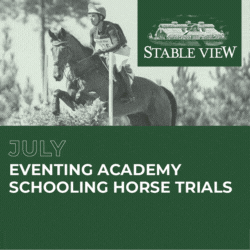We are delighted to host Sally Cousins as an EN guest blogger, as she shares her wealth of knowledge with us in the form of training tips. We hope these nuggets of information can be integrated directly into your program at home and can influence the way you ride and train your horses. Be sure to check out both the Sally Cousins Eventing website and keep up with her on Facebook.
The worst mistakes I have made as a rider and an instructor always involve trying to get too much done in one training session or doing “just one more jump.” We need to make sure that both the rider and horse have enough energy left towards the end of the ride so if it starts to go poorly there is still enough energy to be able to fix the problem.
It is also important to recognize that young horses can get mentally tired much quicker than they get physically tired. Even if you have enough energy left in the horse, if it is mentally tired you can’t accomplish much more.
If a ride is not going well and I can’t immediately figure out how to fix it, I will often try to find a positive way to end the school and come back another day with a new approach. I have heard other trainers say that you will ruin a horse if you let it walk away from a problem. That has not been my experience.
It will be a problem if you do not quickly come back with new ideas, a different or smaller jump to start with, or more support with a ground person or instructor. If the rider is mentally or physically worn out, that is also a time to stop.
Last winter, I took a dressage lesson with Kim Severson. It was later in the afternoon, and I made the mistake of riding 11 or 12 horses before I went. We worked on sitting trot for 45 minutes, and I was riding a very bouncy warmblood. The lesson was going really well, and I was happy with the way I was riding (I’m pretty sure I looked like Ingrid Klimke).
Suddenly, I got tired, all my muscles seemed to give out, and then I looked like Gumby. Kim very wisely ended the lesson. We were not going to get anything else done well.
In my teaching, I pay attention to the attitude of both the horse and rider when they come into the ring. Sometimes you can just tell that the rider has had an awful day prior to getting there. This is not a day to challenge them with new things. I watch for when the riders position starts to weaken. Like my experience with Kim, it is a sign of fatigue.
Horses have bad days too. I will adjust my lesson plan so we don’t cause a problem that could have been avoided. If I am teaching someone new, I will often ask them if the way the horse is going is normal for where it is in its training. I may be seeing it on the best or worst day it has ever had, and that needs to be considered when working with the pair.
Like the doctor’s Hippocratic oath, my goal in a lesson or a training ride is first, do no harm.




















